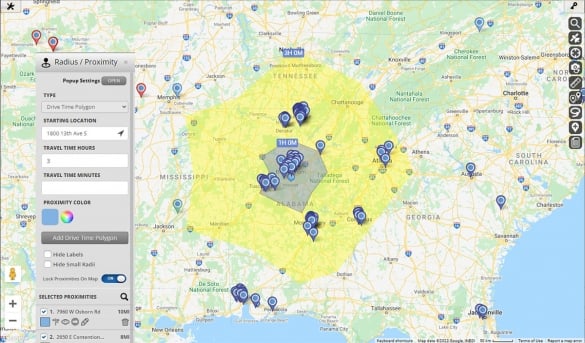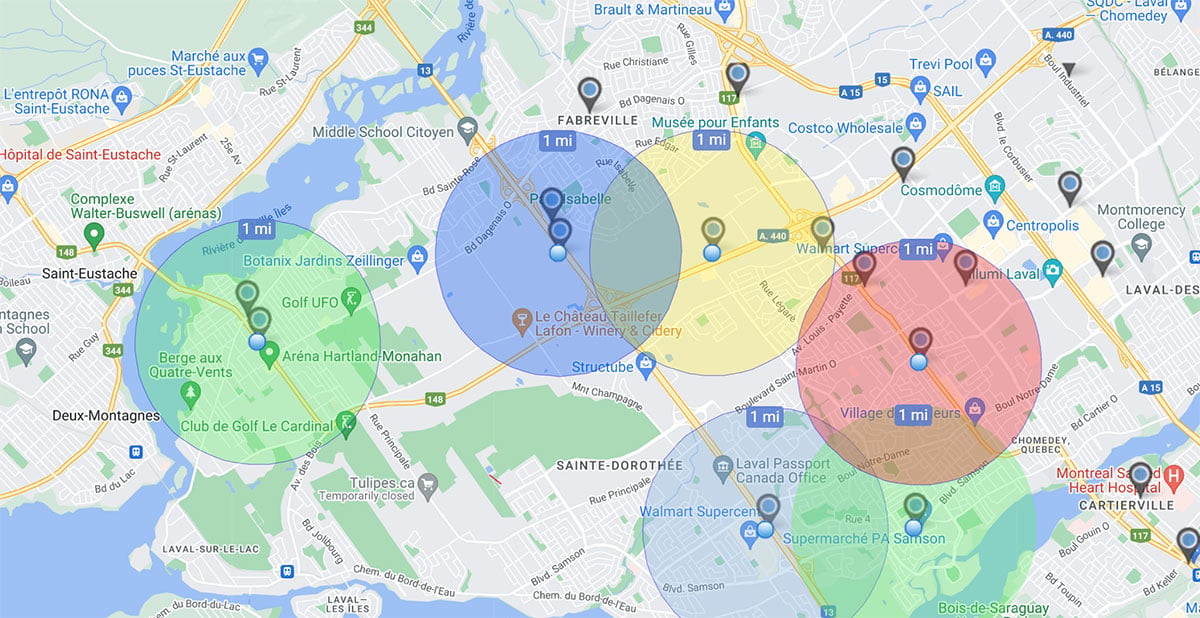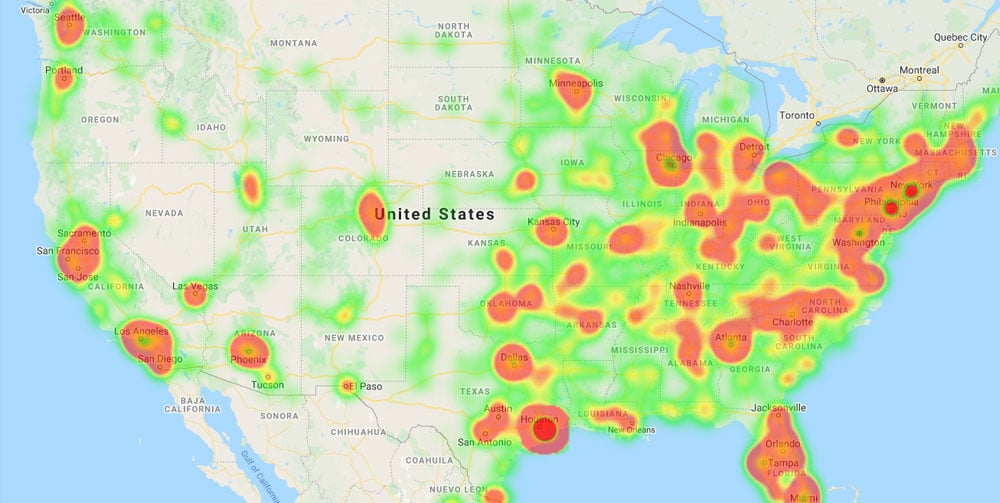
Selecting a new site for your business? Don’t brush off the saying “location, location, location” as a cliché in real estate. Where you set up shop can seriously impact your ability to cut costs, steer clear of risks, attract employees (and customers, especially in retail), and expand your business. Your chosen location isn’t just a formality; it plays a crucial role in shaping the success of your enterprise.
According to the U.S. Census Bureau, nearly 5.5 million new businesses were started in 2023, marking the highest on record, surpassing 2021’s previous high of 5.38 million. This trend reflects sustained entrepreneurial activity that began during the pandemic, fueled by job losses and stimulus packages. The average number of new businesses started annually over the past five years remains around 4.7 million, indicating robust business formation despite fluctuations.

So, if you are one of the entrepreneurs who launched a new venture this past year, you might be about to enter a bidding war for the best business locations available. But before you succumb to the allure of any overhyped location, remember that there’s more to selecting a business location than just an attractive lease in a buzzworthy zip code. Your site selection process must consider a range of factors to give you the best shot possible at success:
Learn about the factors and principles of site selection, how to choose a business site selection successfully, and how Maptive’s robust GIS mapping software can streamline the site selection process.
Table of Contents

Site selection is the process of combining financial, demographic, and geospatial research and analysis to choose the optimal location for your business.
Why is it important? According to recent data from the U.S. Small Business Administration (SBA), about 66% of businesses survive at least two years, while 50% make it to five years. However, survival drops to 33% after ten years and just 25% at the fifteen-year mark. With those odds, selecting the right retail location might be the deciding factor between launching a successful enterprise or becoming a cautionary tale.
That’s why you should consider more than just downtown storefronts and strip malls–instead, explore a variety of options, including airports, free-standing buildings, and special event kiosks. This process, often conducted alongside catchment area analysis, involves strategically placing stores in optimal and densely populated locations tailored to your target market demographics. A key aspect of retail site selection is a thorough examination of competitor locations, as their proximity can significantly influence success in the chosen area.
In site selection, research is everything. The more valuable data you have, the smarter, more informed business location decisions you can make.
However, research alone can quickly become abstract. And the massive volumes of spreadsheet data you’ll need for sound decision-making can be very overwhelming.
That’s why most teams conducting business site selection trust GIS software like Maptive to transform their troves of business location data into practical, intuitive, and actionable data visualization maps in seconds. Try Maptive free for 10 days.
Site selection without the guidance of principles is rudderless—and puts your business at risk of inefficiency, unnecessary expenses, and damaging decisions. Trust these five principles:
Data mapping can help you easily extract a shortlist of high-upside potential business locations. And Maptive’s wide range of powerful features can help you hone in on your best choice. Schedule your free live demo to get guidance, tips, and tricks on site selection for your business.

There’s no substitution for a clear process. Here’s how to choose a business location, from the initial steps and what to research all the way through getting the best out of your data.
When it comes to picking a spot for your business, there’s too much at play to tackle it solo. Round up a crew for your site selection team—grab folks from your executive, operations, HR, and financial squads. Heck, throw in some site selection consultants if you think they’ll help.
Take, for instance, a retail store. You’d want a marketing manager on your site selection team to dig into customer demographics and shopping habits. It’s all about making the decision with a mix of perspectives to get it just right.
Articulate the purpose of your new business site. Determine whether it will serve as a retail or corporate location and establish key parameters, including budget considerations. Develop clear criteria for measuring the success of the chosen site.
For instance, consider a coffee shop seeking a location in a high-traffic area, while a manufacturing plant might prioritize proximity to efficient transportation and utilities. Customize your site selection criteria to align with the specific goals of your business.
Once you have your criteria in place, collect initial data. Internal business data, external commercial real estate data, and United States Census and Demographics data—available to you in an instant with Maptive—each give your site selection map valuable depth. Then, use Maptive’s Filter Tool to hone in on your ideal target areas.
This strategic use of data and mapping tools ensures a comprehensive and well-informed site selection process.
Now that you have target areas in mind, conduct comprehensive research on every important factor that may impact a site’s viability. Collect data on:
For instance, when choosing a location, a distribution center might take into account factors like proximity to suppliers and transportation costs, ensuring a comprehensive evaluation tailored to their specific needs.
Easily integrate your data from various sources—whether it’s an Excel spreadsheet, Google Sheet, CRM, or other .CSV files—into Maptive. The software streamlines the heavy lifting and analysis, facilitating a swift decision-making process. Maptive simplifies the selection of your top choices, allowing you to make informed decisions within minutes.
Visit your best potential site selections, conduct due diligence, make a decision, and negotiate your lease or purchase price. You now have your brand new business location!
And remember: location is important, but so is timing. If you are opening a retail location, you’ll definitely want to visit potential locations during peak hours to gauge customer traffic and assess parking availability. The same principle applies to corporate real estate: make an effort to commute to and from any prospective new location during different times of the day. This hands-on approach ensures that your business not only benefits from a strategically positioned site but also operates seamlessly within the rhythm of its surroundings.
While the selection process is far from easy, Maptive helps businesses choose office locations by making the most tedious and time-consuming steps as simple as a click of a button. Ready to choose your business location? Start your free, no-risk 10-day trial of Maptive now.
Want to gain insight on factors specific to your business and industry? Brainstorm ideas and learn solutions with our rockstar support team. Schedule your live demo now.
The recent Inflation Reduction Act (IRA) has introduced several programs encouraging investments in renewable energy, energy efficiency, and environmentally responsible practices, reshaping the way businesses approach site selection, especially for those committed to sustainability.
These new incentives highlight the growing integration of environmental considerations into site selection strategies. As businesses evaluate potential locations, proximity to renewable energy resources, labor markets aligned with green policies, and access to these government incentives will play an increasingly important role.

For most businesses, your virtual storefront is just as important as your physical store. Recent data shows that 75% of consumers research a company online before visiting it in person–showing that the importance of maintaining an engaging digital storefront is still growing, including positive reviews on platforms like Google and Yelp. In fact, 71% of consumers say they are unlikely to engage with a business that has an average rating below three stars.
To give people a reason to choose your business both online and in-store you should strive to be easy to find and engaging enough to build real connections. Here’s why:
Tech advancements in GIS, transportation technology, and e-commerce infrastructure are poised to influence site selection decisions because they can help businesses ensure that their chosen locations support both current and future growth.
GIS tools provide businesses with real-time data insights through IoT sensor integration, helping them monitor environmental changes and infrastructure status instantly. For example, companies can use GIS to assess flood-prone areas or traffic flow, ensuring optimal placement of retail stores, warehouses, or distribution hubs.
AI and machine learning are revolutionizing transportation management by automating freight scheduling and predicting delivery times. This increased efficiency ensures that businesses choosing locations near logistics hubs or transportation corridors can better manage their supply chains.
E-commerce businesses have become increasingly dependent on cloud-based logistics platforms that optimize delivery routes and streamline operations. Additionally, businesses are prioritizing locations near urban centers or transportation hubs to support rapid last-mile delivery—an essential feature for meeting consumer expectations for faster delivery times in competitive markets.
With its industry-leading range of enterprise-level and user-friendly features, Maptive makes it easy to choose your best business location possible. Here are some (of many) examples.
Your site selection map should be rich with layers of important data. However, that poses another question: how can you intuitively read so much information? With Maptive’s Grouping Tools: simply color and customize your markers by category, then filter them for easy retrieval.
No business location map is complete without demographic data. With Maptive, you get instant access to the latest U.S. Census Demographic Data, so you can get deeper insights into your chosen location’s population density, median household income, education, and more.
With hot spot heat maps available at your fingertips, you can identify where you’re succeeding—and where you need to open locations. All from your spreadsheet data. Visualize and track your concentrations of data, identify hot spots, and discover your cold spots.
A bad weather system can set your business back in an instant. Business-shattering factors can creep up on you with climate change. Identify geographic and environmental risks easily with rich satellite imagery sourced via Google Maps.
When it comes to employees, customers, and delivery trucks, time and stress behind the wheel can have an outsized impact on your bottom line. Maptive’s dynamic duo of driving intelligence tools—the Driving Radius Maps and Drive Time Polygon Tools—can help you track how far you can reach, where you can go, and where your business should be—with real-time data.
Start your free, no-risk 10 day trial of Maptive today.
No credit card required.
Brad Crisp is the CEO at Maptive.com, based in Denver, CO and born in San Francisco, CA. He has extensive experience in Business Mapping, GIS, Data Visualization, Mapping Data Analytics and all forms of software development. His career includes Software Development and Venture Capital dating back to 1998 at businesses like Maptive, GlobalMojo (now Giving Assistant), KPG Ventures, Loopnet, NextCard, and Banking.
